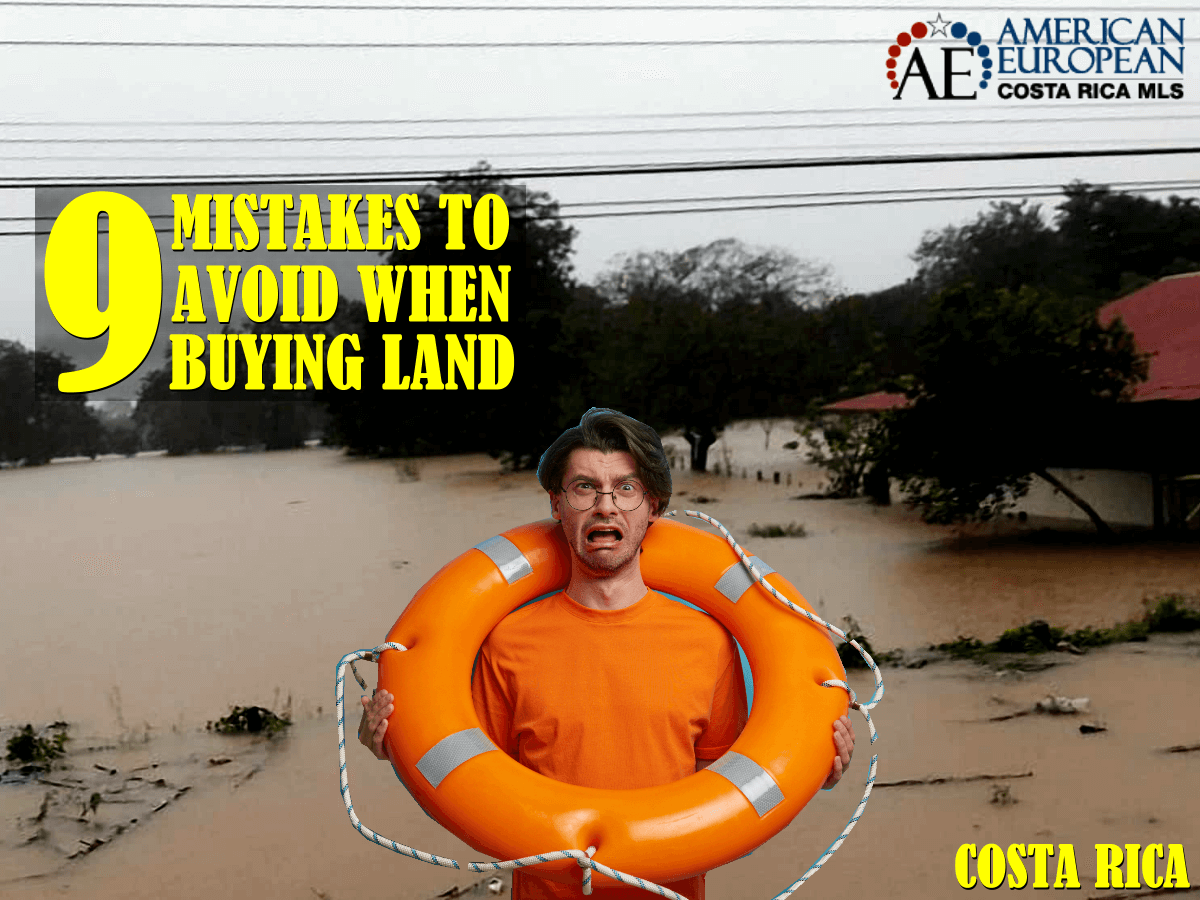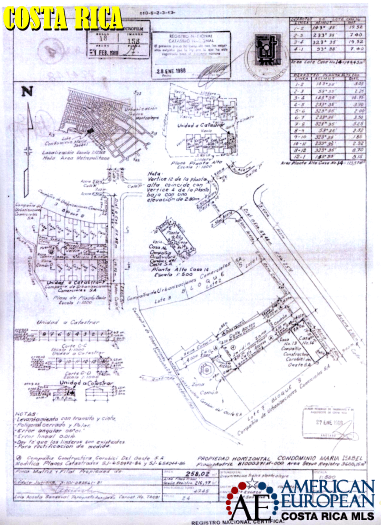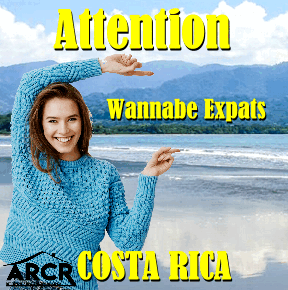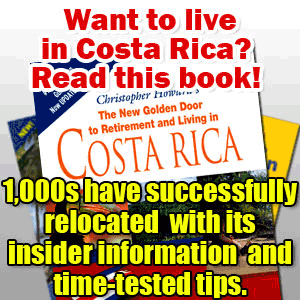Estimated Reading Time: 8 Minutes
The lack of knowledge and the excitement of buying land you fell in love with are common reasons for rushing into a purchase and making costly or fatal mistakes.
Buying land is pretty simple for those who do it all the time. But even experienced buyers from other latitudes should learn about some crucial details that can influence a purchase negatively.
Before you purchase a building lot in Costa Rica, you need to know a few facts before you commit. You might think you are safe when purchasing a lot in a subdivision or from a developer but might be in for some surprises; please read on.
Don’t buy land on sheer promises from a seller, a realtor, or a real estate developer, but buy based on facts. I have seen real estate agents and developers promise and not deliver:
- The city will pave the road in front of the property this year
- The water company is putting in a new waterline next year
- The developer will install all the utilities underground
Our blogs have generated numerous emails with buyers’ questions after making mistakes. Therefore, I’d like to show you a few essential tips before you buy land here without the proper knowledge.
It doesn’t matter if the land you’re buying is on a public road, an easement, a subdivision, or a gated community. Eventually, you will want to build a new home or any other type of construction. Therefore, avoid any mistakes before you put your signature on the purchase agreement.
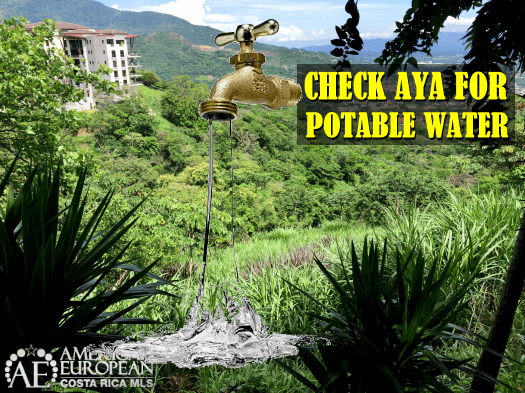
1. Potable water
We all know about the importance of water in our daily life. When buying land in Costa Rica, you first want to ensure potable water is available on the property. It’s important to note that you will not be able to request a building permit at the municipality where the land is located without having proof of water availability. How and where can you get this proof?
The land seller should request a water letter or “Carta de agua” from the official source controlling the water in the area. There are three possibilities of institutions that can expend a water letter, depending a lot on where the property is:
a. A y A (Acuaductos y Acantarillados) is the national water company, and they are in charge of the potable water in most parts of the country. Visit, armed with a copy of the survey map and a printout of a title search, any of the A y A offices.
b. Asada or water coop only exists where A y A is not directly involved. The asadas are run by a local board but financially controlled by A y A. Often, rural gated communities have their registered water well, which is controlled by an Asada.
c. Private registered water well or water concession on the property, controlled by Dirección de Agua, a subdivision of MINAE. Be aware that there are many unregistered water wells in Costa Rica, and those cannot be used to request a building permit.
If the seller offers other proof of water access than the three above, first check with your lawyer before you go to the next step.
Where is it located?
Usually, in Costa Rica, the main water line – 2″ PVC pipes, but sometimes only 1″ – is under the road or the pedestrian area in front of the property. Real estate developers will install a water connection or “paja de agua” at each property when they develop the subdivision or community.
Once a land owner has requested a water meter or medidor, the water company installs it, and construction can start. When you install the water on your property, you need to use 1/2″ pipes, gray for cold and white for hot water. Or if the dwelling is a long distance from the meter, you need to install a ½ to ¾” reducer after the meter to increase the size of the tube to the dwelling.
2. The survey map before buying land
The plat, or survey map, is called a “Plano catastrado.” The plat is a map of the property, drawn by a surveyor and registered at the cadaster or Catastro Nacional. The survey map shows the size of the property, its location, the boundaries of the property, and much more.
Ask the seller or real estate agent for a copy of the survey map of the land. Then, with that copy in hand, stand in front of the property. This is a critical exercise, so you can make a preliminary check of the neighborhood and the land you are buying. It is also essential to check the plat for a stamp that says “visado.” The visado means the plat of the property was registered at the municipality, which means the city will allow you to build on this land if you complete all the requirements. See below what a survey map looks like. This sample below is a plat of a property in a subdivision.
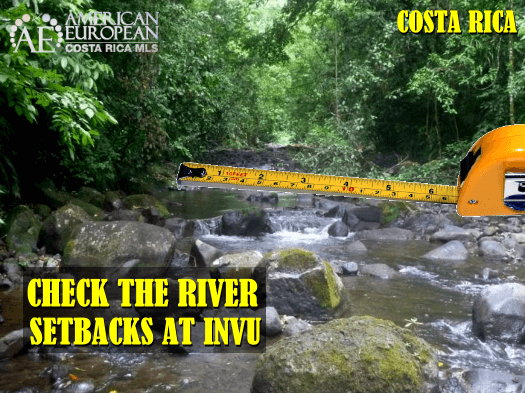
Is there a river or creek on or bordering the property? Because you are not allowed to build on a setback, you want to know what the setbacks or el “alineamiento fluvial” are from that waterway. The size of the setbacks, between 10 and 40 meters, depends on the size of the river and can be requested at the National Institute for Housing and Urban Development (INVU).
Flooding
Another vital issue to avoid when buying land is a property that is almost level with a river on the property or one that is nearby. You might not realize it when purchasing during the dry season, but a big rainstorm can provoke flooding and create more damage than you’d like.
Talk to some neighbors and see what they can tell you about what’s happening in the area during the rainy season.
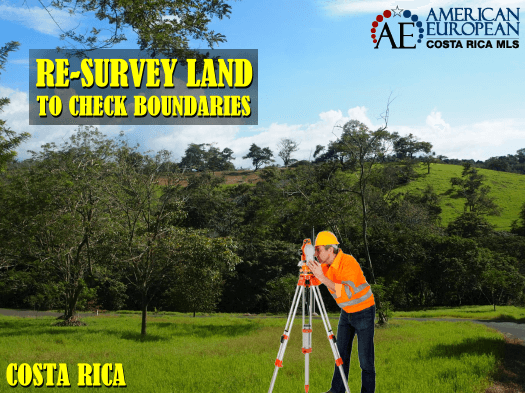
4. Surveyor
We ALWAYS recommend using a surveyor before closing a land purchase. Sometimes, when there are several unbuilt neighboring properties, it’s challenging to know which one you are buying. You don’t want to start construction on the wrong property, do you?
Typically, in the purchase–sale agreement option, you should stipulate a re-survey of the property before closing, at your cost, to confirm location, boundaries, and size.
Especially when there is no construction on the property, it is very well possible that neighbors moved the fence, and nature has covered all proof. It is also possible that the city has widened the road and the survey was not re-done, so there is less land than t e survey shows.
5. Zoning
Always request zoning or “Uso de Suelo” from the seller. Is the property zoned for what you want to build there? Not every city in Costa Rica has a zoning plan. Some municipalities use the GAM for zoning. What building restrictions does the zoning carry? The zoning will tell you the density and other information that can be important to your building plans.
Requesting zoning will also protect you from building in protected areas or areas that require geological studies.
6. Soil studies
Is soil replacement necessary where you will build the house? Maybe the topsoil is all clay and doesn’t drain, or maybe garbage was used as fill years ago?
Soil studies are not expensive and well worth the investment. However, these studies will tell you if the land is stable if you need soil replacement, retainer walls, or other costly investments you are not considering.
7. Hire an Architect
I suggest every potential buyer hire an architect to check out the building lot you’re planning to purchase. An architect can give you a professional view of the quality of the property, the best construction site, where the wind (and rain) comes from, where the drainage should go, and other great tips. The architect might even recommend not purchasing the land and looking for alternatives.
Architect Diego Mendez gave us 5 reasons to hire an architect before you buy.
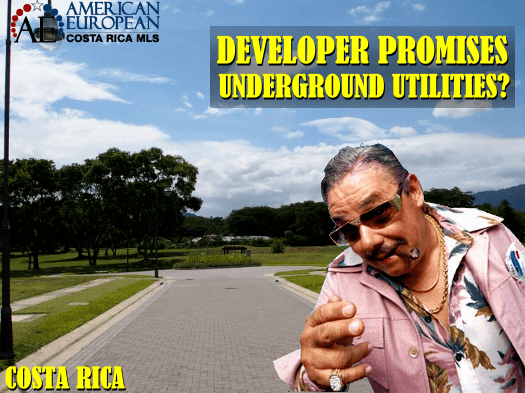
8. Real Estate Development
Promises are easy to make, especially by real estate developers selling during pre-construction. If you buy land in a real estate development, check this quiz. Alto, ensure all your money stays in escrow until the developer delivers everything promised. Do n t close until the developer can provide a clear title and with utilities connected at the entrance of your building lot.
9. Attorney’s due diligence
Please don’t hire a real estate attorney when it’s too late. Hire one to do the legal due diligence before giving the seller an earnest money deposit. By pulling a study of the National Registry, the attorney can see what legal restrictions there are if there are liens and annotations, problematic easements, and more.
We hope this blog will help you decide to avoid some problems when buying land in Costa Rica. Start by hiring one of our agents; contact us now.
Used in images: Life saver photo created by wayhomestudio – www.freepik.com


